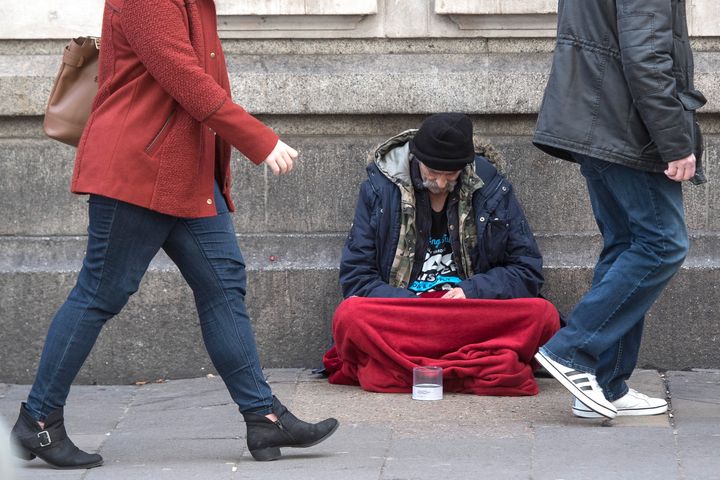
Wherever you live in the country, over the last few years you’re likely to have noticed an increase in the number of men and women bedding down on our streets. It’s an emergency and the government’s strategy on ending rough sleeping - launched yesterday - is an emergency response.
The latest statistics, based on street counts and estimates conducted last autumn, show street homelessness has increased for seven consecutive years – up 169% since 2010. They record 4,750 people sleeping on the streets last autumn. Many more go uncounted because they’re hidden from view in cars, disused buildings, parks and fields.
This isn’t just an inner-city phenomenon. While rough sleeping is prevalent in major cities like London and Manchester, areas including Luton, Cornwall, and Southend-on-Sea feature in the top ten areas with the highest street counts.
This is an outrage. No civilised society should accept so many people living, and in some cases dying, on the street.
Shelter sat alongside six other housing and homelessness organisations on the Rough-Sleeping Advisory Panel, convened earlier this year to inform the development of the new strategy. So, is this new strategy likely to eradicate rough sleeping?
It certainly is a very important step forward. Particularly promising is its aim to make sure that the various arms of government – work and pensions, health, and justice – all work together to try and prevent and rapidly alleviate the complex problems that are part of rough sleeping.
There’s a new £19 million fund to support over 5,000 people at risk of rough sleeping to sustain their tenancies and keep hold of their rented home. We already know that the loss of a tenancy is the leading cause of homelessness in this country, so this extra help should prevent at least some people from ending up on the street. But it will only go some way to plug the gap left by previous council funding cuts.
Also welcome is the strategy’s new £17 million to fund 15 ‘Somewhere Safe to Stay’ pilots. These pilots are designed to provide much-needed emergency help to people at immediate risk of sleeping on the streets.
However, emergency help can only go so far if people then can’t find a more settled home to move into. In this respect, the next stage of the £50 million ‘Move-On Fund’, with its aim to deliver longer-term homes for people who are ready to leave hostels or refuges, should make some difference.
But let’s be absolutely clear, this strategy is not a fix for homelessness. Homelessness is the lack of a home. Many people deal with mental health problems, addictions or other health and social problems, but not all are homeless.
To avoid homelessness, people must have access to a safe, secure and affordable home. In today’s world, this is an increasing challenge. Renters have so few rights while our housing system is plagued by a chronic lack of genuinely affordable homes, deep instability, and problems with housing benefit.
Last year, the government’s white paper on housing was explicit: “We know that high and increasing costs in the private rented sector can impact upon tenants who struggle to pay, and these households are more likely to be at risk of becoming homeless.”
And yet, in spite of this acknowledgement, the government’s own four year freeze on housing benefit continues to leave more and more people battling to keep up with the cost of private rents.
So, if the government truly wants to eradicate rough sleeping by 2027, it needs to quickly come up with a plan to build many more social homes, and act to create real security for those struggling with their rent.
